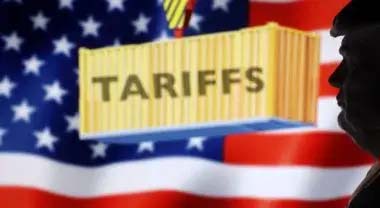 U.S. Tariffs and Their Impact on India’s Poultry Industry
U.S. Tariffs and Their Impact on India’s Poultry Industry
The United States' recent imposition of reciprocal 27% tariffs on Indian goods has raised concerns across multiple sectors. While India’s poultry industry is not a major exporter to the U.S., the broader trade dynamics and ongoing negotiations between the two nations could have indirect consequences for Indian poultry farmers and businesses.
Limited Direct Impact on Indian Poultry Exports
India's poultry exports to the United States are minimal, meaning the new tariffs do not pose an immediate threat to outbound shipments. In fact, the U.S. primarily exports poultry to India, rather than importing it.
• The United States is the world’s largest poultry producer, with substantial support for chicken, turkey, and duck industries.
• Meanwhile, India focuses on domestic poultry production, supplying eggs, chicken, and processed meats to its local market.
• The 27% U.S. tariff on Indian goods does not significantly affect poultry trade since India does not rely on poultry exports to the U.S.
However, the real issue lies in the U.S. demand for increased access to India's poultry market—a sticking point in ongoing trade negotiations.
Why India Resists U.S. Pressure
• Protecting livelihoods: Over 3 million small-scale farmers depend on poultry for income.
• Food security: India prioritizes self-sufficiency in food production.
• Disease concerns: A previous ban on U.S. poultry due to bird flu risks has made policymakers cautious.
• Current market structure: India’s poultry industry is dominated by local players. Cheap U.S. imports could undercut domestic prices and harm rural economies.
Long-Term Risks to India’s Poultry Sector
If India further reduces tariffs under U.S. pressure, several risks could emerge:
• Threat to small farmers: U.S. poultry, heavily subsidized, could be sold below production costs, making it difficult for Indian farmers to compete. A price collapse could drive small producers out of business.
• Shift in market dynamics: Fast food chains (like KFC and McDonald's) might prefer cheaper U.S. imports, reducing demand for local poultry. Imports of processed meat (like frozen cuts) could rise, affecting local processors.
• Negotiation trade-offs: India might sacrifice poultry industry protections to secure better terms in other areas such as pharmaceuticals, IT, or manufacturing. The government must carefully balance trade interests with farmer welfare.
A Delicate Balancing Act
Although the 27% U.S. tariff does not directly harm India’s poultry exports, the broader trade tensions highlight deeper underlying issues. The U.S. wants greater market access, but India must shield its farmers from unfair competition.
Key Takeaways
• India’s poultry industry is currently protected by high tariffs.
• Future trade deals could erode this protection, putting local farmers at risk.
• India may use poultry as a bargaining chip in wider trade negotiations with the U.S.
For now, the domestic poultry sector remains stable, but policymakers must strategize carefully to prevent long-term damage to millions of livelihoods.
Source: avinews.com


















